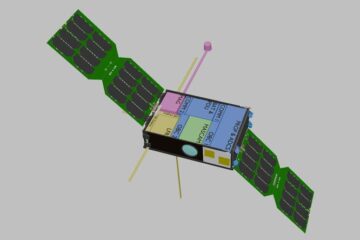A computer per student leads to higher performance than traditional classroom settings

A dozen years into the “1 to 1” computing movement's push to pair every schoolchild and teacher with a laptop, studies show the students in these programs outperformed their peers in traditional classrooms, according to researchers.
Students who have participated in 1:1 computing report higher achievement and increased engagement, according to findings of studies published in a special issue of the Journal of Technology, Learning and Assessment, published by Boston College's Lynch School of Education.
The journal's January 2010 edition represents the first-ever collection of peer-reviewed research articles examining the impacts of providing every teacher and student their own laptop computer in school – typically know as “1:1 computing.”
“This new collection of articles brings together some of the best evidence to date on the implementation and impacts of 1:1 computing,” said Boston College Assistant Professor of Education Laura M. O'Dwyer, a co-editor of the journal, which is housed jointly in the Technology and Assessment Study Collaborative (inTASC) and the Center for the Study of Testing, Evaluation and Educational Policy (CSTEEP) at Boston College.
The journal includes co-editor and Lynch School researcher Damian Bebell's evaluation of a pilot program in Massachusetts' Berkshire County. Bebell found the Berkshire Wireless Learning Initiative produced improved performance in English and writing, though results for math achievement were flat. Overwhelmingly, the laptops got students excited about school.
Bebell said that across all of the studies contained in the journal, one common link is clear: the value of teachers committed to making 1:1 computing work.
“One of the most salient findings was the critical role that teachers played in the success of each 1:1 program,” Bebell said. Additional factors critical to student success across 1:1 technology settings included:
Having a strong commitment from school leadership
Developing consistent and supportive administrative policies
Creating professional development opportunities for teachers, particularly the sharing of best practices
All of the studies that examined the impact of 1:1 computing on student achievement found that students in the 1:1 settings outperformed their traditional classroom peers on English/Language Arts standardized tests by a statistically significant margin. Study authors also reported on evidence of increased student motivation and engagement, as well as changes in teachers' instructional practices.
The most recent edition of the Journal of Technology, Learning and Assessment can be viewed at www.jtla.org.
Media Contact
All latest news from the category: Science Education
Newest articles

Caution, hot surface!
An international research team from the University of Jena and the Helmholtz Institute Jena are demystifying the mechanisms by which high-intensity laser pulses produce plasma on the surface of solids….

Exploring the Asteroid Apophis With Small Satellites
In five years’ time, a large asteroid will fly very close to Earth – a unique opportunity to study it. Concepts for a national German small satellite mission are being…

First model of the brain’s information highways developed
Our human brain is not only bigger and contains more neurons than the brains of other species, but it is also connected in a special pattern: Thick bundles of neurons…





















